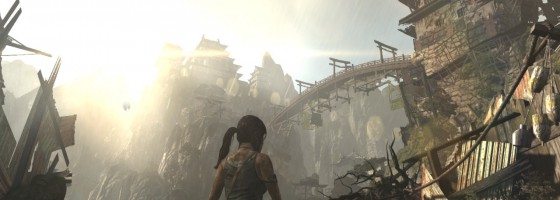Last week on the perceptive podcast, we got onto the discussion of how over saturated the game industry is with quality game design and the problems with making objective game reviews.
As we’ve seen with the rise of digital distribution and sales, the value of video games has been steadily going down and the problem is one of the game industry’s greatest strengths.
Objective vs. Subjective Value
With any consumer product industry, there are two factors that determine the monetary value of a product: The subjective value and the objective value.
Subjective value is the consumer perception of the product, with questions like: Does it look good or is it from a popular brand?
Objective value is the technical or hard coded aspects of the product — Is the product rare or are the parts of the best quality?
For an example we can look at the classic car market and how both values equate to big bucks. There is a huge market for cars before 1980 with many of them valued at several thousand, hundred thousand or millions of what they were originally worth.
Subjectively speaking, classic car owners love the style and aesthetic design of older cars. Designs like the muscle cars of the 70s aren’t being made anymore and for people who want that particular look, there is only one way to get it.
Objectively speaking, while the cars completely restored may not have the horsepower or features of today’s comparative versions, they are still incredibly rare which makes their parts have value.
Obviously, when we talk about cars worth millions of dollars we are referring to the ones that feature both high subjective and objective value, like Ferrari’s or original Shelby Cobras. These cars featured incredible designs, from a well known brand and were made with the best of the best parts for their time.
Taking both subjective and objective value into consideration, we can see how cars have pricing thresholds that help retain their value and segment the market. Someone buying a family minivan with all the features today would still spend a hell of a lot less compared to someone wanting just an original frame for a Shelby Cobra.
Unfortunately with the game industry, it is a lot harder to determine the value of games.
Grading Gameplay:
One of the best aspects of the video game industry is the variety and freedom of game design. While we may have genres that segment games together, there are very few elements that could be considered “required” in a video game.
As the industry grew, we saw how genres started to make use of mechanics and systems from other ones to create some amazing titles. As an example, the combination of ARPG and rogue-like design in the Souls series, or Meta game design in Team Fortress 2.

Indie titles like FTL were released cheap enough to still make a profit, without losing money due to the drop in value of video games.
However, this presents a problem with defining the value of a video game, namely: How do you put an objective value on gameplay?
Now, it’s important to make the distinction that we are not talking about the technical aspect of a game such as bugs, controls, or connectivity, but the gameplay.
When we are talking strictly about game design and nothing else, there is no such thing as an objective measure of game design. For example: Are there any objective ways of determining if New Super Mario Bros U or Super Meat Boy’s gameplay makes it the better 2D platformer?
In any other industry, the parts or materials that make up a product lend themselves to adding objective value: An engine that puts out 400 horsepower is objectively better than something that only puts out 200. But with game design, there is no objective way of examining gameplay.
While graphics have been a major determining point of quality, there is a huge difference between just graphical power and aesthetics which we could spend an entire article discussing that alone. There are plenty of examples of games with a great aesthetic value (Bastion, Bioshock: Infinite) vs. a game that has great graphics but no real style to them (Dead Space 3, Call of Duty.)
Every review written is subjective, based on the writer’s own skill level and preference of design. One reviewer’s impossible level that forced them to quit, is another’s easy time that they blew through.

Games like Dark Souls with a high difficulty curve led to polarizing reviews based on the reviewer’s skill level.
Because gameplay is subjective, it has been the predominate factor in game pricing.
During the 90s when there were only a few games being released a month and even less considered amazing and in response, game prices were on the high end of the scale.
I remember a period where a new video game could cost anywhere from $70 to $90 and people were fine with that.
But as the digital age grew in the last decade and both game availability and quality grew, the subjective value of games has taken a nosedive for the majority of the industry and has caused a substantial affect on AAA development.
Too Much of a Good Thing:
The Indie market since the rise of digital distributors like Steam has grown to the point where it rivals the AAA market. Thanks to the ease of distribution and the power of free (or commercially licensed) game engines, anyone with the know-how and team can make and release a video game.
But with so many games flooding the market, we have reached a point of inflation when it comes to games. Objectively speaking, if someone wants to play a FPS, why should they spend $60 on one when they can find ones for $30 or less?

Spec Ops was made to appear like your standard FPS on the market, however it was anything but. Yet word of mouth still not help it in the market.
There are notable examples to this from companies that don’t flood the market. Developers like Nintendo and Atlus only release a handful of company developed titles a year that allows them to keep their value longer.
Also, Indie developers that focus on very niche genres like war games or grand strategy still put out games for $40 or more.
The reason is that the market for those games is so small that the developers can price the titles high as they are usually the only game in town.
Incidentally, the exclusivity contract with the NFL has been a major factor in the Madden series keeping their high value… at least until the newest version comes out.
However the same can’t be said for the majority of popular genres on the market. How many RPGs, action-adventure and FPS games are being released each year, both from Indies and AAA?
While every series will have die-hard fans that will continue to buy the latest iteration of their favorite game, the days of being the only big name game on the market is behind us.
Because of how accessible and reproducible games have become, it has made it harder for AAA games to shine. In return, we have seen a number of series altered to appeal to a wider demographic (see Resident Evil, Dead Space, Thief and Tomb Raider as examples.)
With AAA development in the millions, publishers want to do everything they can to recoup the cost of production and advertising and if one series sells incredibly well, other publishers want to capture that.
But when you have Indie, mobile and social designers providing a variety of content at a fraction of the cost, it’s hard to spend $60 on just one game.
Despite what AAA developers and publishers say: The value of video games has decreased and will continue to do so. Anyone who thinks that raising the MSRP for AAA games will improve things is a fool, as the market is just too big and subjective-based for it.

Atlus is one of the few console and handheld developers that their titles retain value for a long period, thanks to their originality.
Instead we’re seeing a case where the price value for games is decreasing.
Once, $20 for a game was considered the “bargain bin” price where you knew you weren’t getting a high quality game. Today we are seeing games at $5 or $10 with amazing quality to them.
Sony’s announcement of opening up the PS4 for Indie developers is a big deal as allowing them onto the home market will further show consumers that price is no longer the determining factor of game quality.
As crowd-funding continues to grow as a popular solution for game publishing and the continuing growth of the Indie market, it will be up to AAA developers and publishers to either adapt to the changes in the market, or face a market that is too flooded with games to care about their latest $60 blockbuster.


